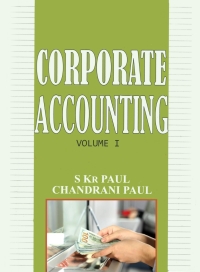

369 Analyzing Debt Terms, Yields, Prices, and Credit Ratings Assume Reproduced below is the long-term debt footnote from the 10-K report of Southwest Airlines. Long-Term Debt (in millions) 2012 2011 7 7/8% Notes due 2012 $ -- $ 100 French Credit Agreements due 2017 50 37 6 172% Notes due 2017 370 5 1/4% Notes due 2019 350 336 5 3/4% Notes due 2021 300 300 5 1/8% Notes due 2022 311 300 French Credit Agreements due 2022 94 100 Pass Through Certificates 7 3/8% Debentures due 2032 103* 100 Capital leases 2,110 1,705 Less current maturities 45 122 Less debt discount and issuant costs 19 $ 2,046 $ 1,567 480 52 63 * The carrying value of these debentures is 103 while the face value is 100. The company marks these debentures to market each period because the debentures are hedged with interest-rate swaps. The swap and the debentures are both marked to market, where any gains and losses offset each other. As of December 31, 2012, aggregate annual principal maturities of debt and capital leases (not including amounts associated with interest rate swap agreements and interest on capital leases) for the five-year period ending December 31, 2017, were $45 million in 2013, $40 million in 2014, $55 million in 2015, $38 million in 2016, $416 million in 2017, and $1.5 billion thereafter. Assume below is a summary of the market values of the Southwest Airlines' bonds maturing from 2017 to 2032 (from Capital IQ). Maturity Date Security Type Coupon Offer Date Amt. Outstanding ($mm) Current Price Yield Mar-01-2017 Corporate Debentures 6.500 Feb-26-2007 370.00 97.290 7.450 Oct-01-2019 Corporate Debentures 5.250 Sep-14-2009 350.00 83.164 9.024 Mar-01-2032 Corporate Debentures 7.375 Feb-25-2002 100.00 82.409 9.408 (a) What is the amount of long-term debt reported on Southwest's 2012 balance sheet? $ 0 What are the scheduled maturities for this indebtedness? Year ($ millions) 2013 2014 2015 $ 2016 $ 2017 $ Thereafter $ 0 0 0 0 Why is information relating to a company's scheduled maturities of debt useful in an analysis of its financial condition? We prefer to see liabilities coming due in the near future if interest rates are expected to decline; but deferred if interest rates are expected to increase. We are looking to see if all payments are approximately equal. If so, the expected drain on cash flow will be constant. Excessive payments in any one year can create a cash flow problem, especially if the debt cannot be refinanced. The information relating to a company's scheduled maturities is not important. (b) Southwest reported $119 million in interest expense in its 2012 income statement. In the note to its statement of cash flows, Southwest indicates that the cash portion of this expense is $63 million. What could account for the difference between interest expense and interest paid? The difference arises from the amortization of any discounts or premiums on the debt. The difference arises because the amount of interest paid is based on prevailing interest rates that change frequently. There is never any difference between interest expense and interest paid. The difference arises because the amount of interest expense is based on prevailing interest rates that change frequently. (c) Southwest's long-term debt is rated "BBB+" by Fitch and similarly by other credit rating agencies. What factors would be important to consider in attempting to quantify the relative riskiness of Southwest compared with other borrowers? Credit rating agencies assess companies' default risk by gauging the level of debt in relation to the companies' operating cash flow, profitability ratios, and the ratios for long-term creditworthiness. Credit rating agencies assess companies' default risk by focusing primarily on non-quantitative measures such as the quality of the company's management team. Credit rating agencies assess companies' default risk by focusing primarily on macroeconomic factors such as the projected level of interest rates. Credit rating agencies assess companies' default risk by comparing the target company against companies that have defaulted on their debt








